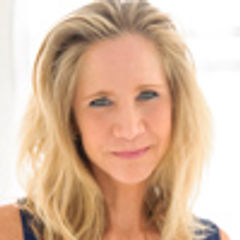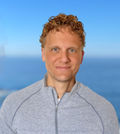Identifying credible sources of evidence-based nutrition information for yourself or to share with clients can be a challenge, especially in the quickly evolving world of online influencers. The ability to separate fact from fiction is a vital tool for both you and your clients.
Dominique Adair, MS, RD, has spent her career helping people help people eat better. A certified fitness professional, a Clinical Lipid Specialist, a Registered Dietitian, and ACE Scientific Advisory Panel member, Dominique is the Head of Clinical Quality, leading a team of 300 Registered Dietitians at Nourish (www.usenourish.com), a tech-leveraged, telehealth company that matches patients and clients with RDs.
Here, Dominique answers our questions and offers some strategies for finding trustworthy content, identifying voices you can trust and knowing what makes a source credible.
When reading an article or blog, how can you tell whether the information presented is trustworthy and evidence-based? Are there strategies you can share that will help health and exercise pros and their clients identify good content?
One helpful question to ask to separate fact from fiction is: From where/whom did the info come? If the organization is a national (or international), credible organization, that's a start. A really good filter to put something through is: "Will someone profit from a sale based on the info provided?" For example, the American Heart Association, American Cancer Society and American Council on Exercise all dispense evidence-based nutrition information, but they are not promoting anything in the content that could provide them with revenue. These organizations, and others, are essentially dispensing evidence-based education. However, a supplement company or a food company might dispense content that promotes the purchase of their products. That doesn't necessarily mean that the information is not scientifically based, but the exercise pro needs to be much more circumspect with content that promotes a sale.
The second part is the "who." Just like you wouldn't go to a celebrity who isn’t a surgeon for a meniscus repair, you shouldn't go to a celebrity for nutrition council or information. The professional you should turn to for information on nutrition, diet and performance, and diet and disease is the registered dietitian (RD). An RD is a credentialed healthcare professional who applies evidence-based information about nutrition and diet to contribute to the health and wellness of individuals, groups and communities. The RD has a minimum of a graduate degree from an accredited dietetics program and has completed a supervised practice requirement, passed a national exam and completes continued professional development throughout their career.
Similarly, in the world of social media and influencers, how can pros know when to believe what they’re seeing?
This is related to what is shared above. A lot of what we see on social media are testimonials. But what people may not know is that behind the scenes these people are often paid, in dollars or products, to say good things about the product or program. Back to the surgeon example: You wouldn't let an influencer take out your appendix because they have a million followers. Health and exercise pros should use the same discretion when seeking (and passing along to their clients) nutrition advice and information.
How can pros discuss this topic with their clients, who may be expecting extreme or rapid results or be using potentially dangerous practices as part of their nutrition or exercise regimens?
I think it is very common to want results yesterday, so health and exercise professionals are already great at having these conversations and setting expectations. When it comes to the world of nutrition, it's no different. Explaining that sustainable behavior modification is what will produce long-term wins is essentially the same conversation. That said, we also know it's important to meet clients where they are. That doesn't mean agreeing to a five-week, 50-pound weight-loss goal or a five-week 10-pounds-of-muscle-gain goal. But, it does mean we can use coaching skills like motivational interviewing to express empathy and support clients' self-efficacy. You might say something along the lines of, “It sounds like you're really ready to make some changes. That's terrific. Let's make sure we focus on things that will produce long-term goal achievement, so you get the most bang out of your effort.” Co-developing SMART goals with the client can go a long way toward talking through those unrealistic expectations and swapping them for goals that still feel exciting and motivating to the client.
Are there sources you frequently use when looking for evidence-based content? For example, are there websites or social media accounts you can share with our readers?
In most cases, credible websites end in .gov, .edu or .org. This does not mean that websites ending in .com or .net can’t be trusted, but they should be carefully reviewed based on the filters I detailed above. Here are a few examples of trustworthy sources of nutrition information:
In addition, I'd encourage health and exercise professionals to get their hands on the original research. For example, if you see a study mentioned in the popular press or on social media, go to PubMed to see if you can find the actual journal article that is mentioned. PubMed is a free resource supporting the search and retrieval of biomedical and life sciences literature with the aim of improving health—both globally and personally. Citations in PubMed primarily stem from the biomedicine and health fields, and related disciplines such as life sciences, behavioral sciences, chemical sciences and bioengineering. If you type the title of the paper, or even just a subject area (e.g., role of physical activity in weight loss and weight maintenance) and then type in “scholarly,” the search engine should pull mostly papers from PubMed. From there, you can pursue the entire paper.
Finally, it can sometimes be challenging to put evidence-based information into practice. Do you have any suggestions for exercise pros who want to translate dietary guidelines or other evidence-based content into actionable steps for their clients?
It is hard! I have built teams of clinicians nationally for decades, who have taken care of tens of thousands of people, and the counselors who do this best “help with the how.”
Psychologists refer to the intention–action gap, which is a fancy way of saying, “Why don't I do what I say I'm going to do?” And the reason is simple and complex... Behavior change is very hard. When a health or exercise professional reads a paper, or learns of a guideline, they should think of ways they can help that client with the how. For example, we know that according to the Dietary Guidelines for Americans, adults should eat 1.5 to 2 cup-equivalents of fruits and 2 to 3 cup-equivalents of vegetables daily. But rather than making that the goal, keep asking how.
It might sound like this:
Professional: You know the Guidelines recommend 2 to 3 cups of veggies a day. That’s for disease prevention and heathy weight achievement, which are two things you said were important to you.
Client: Okay, I am going to eat more fruits and vegetables.
Professional: Great. How are you going to do this?
Client: Well, first I have to get these foods in my house.
Professional: I see. How are you going to do that?
Client: Well my weekdays are really busy, but I could make Saturday or Sunday a shopping day.
Professional: Your weekends also seem pretty full, so how are you going to make time on the weekends?
Client: I am going to ask my spouse to watch the kids while I go to the gym on Saturday. On the way home, I’ll stop at the grocery store. Maybe I can find a recipe with the produce items that we can all make together.
In that exchange, the pro has taken the very high-level Guidelines and made them possible for someone to implement. They’ve helped with the how without overstepping their scope of practice.
If you are interested in learning more about what the scientific literature reveals about the intersection of nutrition and physical activity, check out Nutrition and Physical Activity: When Science Meets Application (worth 0.1 ACE CECs). In this course, you’ll learn about the distinctions among different types of research and how to use an evidence-based approach to help clients achieve their nutrition and physical-activity goals.




 by
by 




 by
by